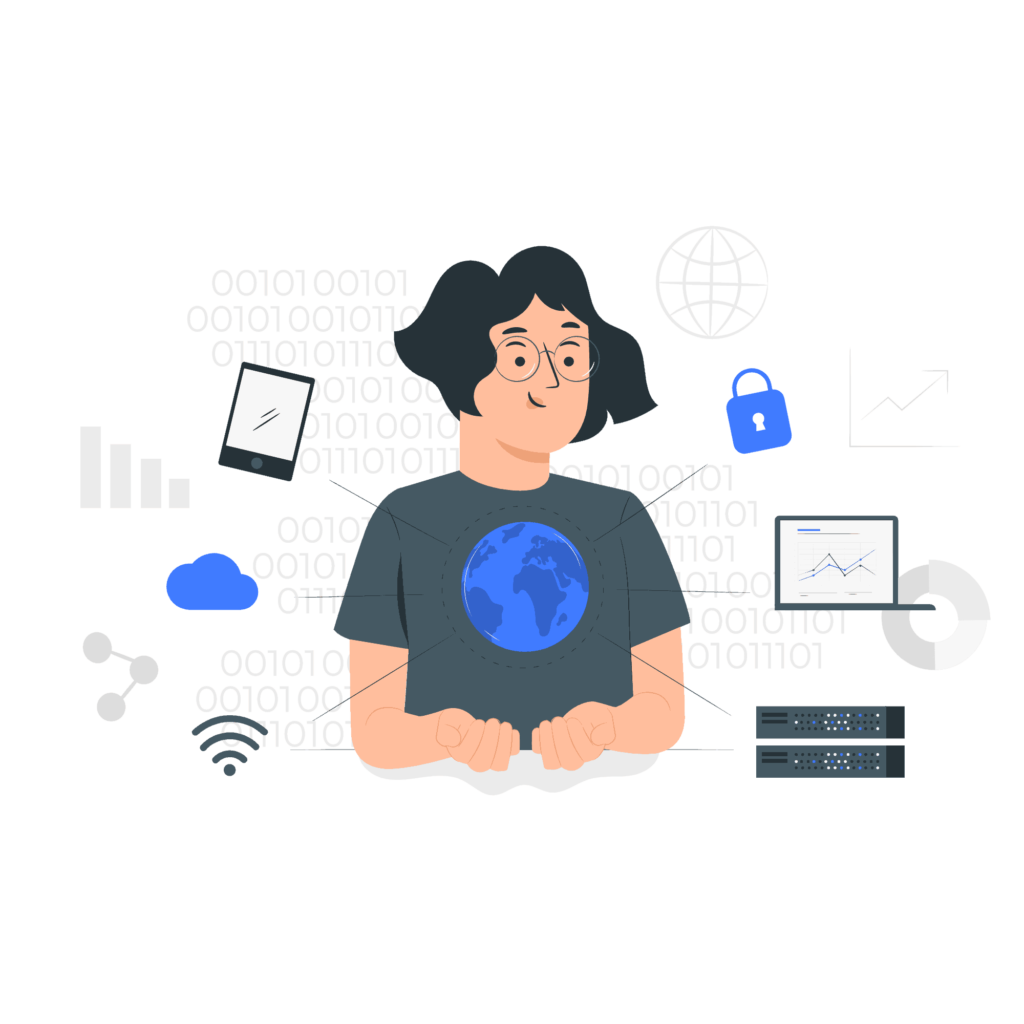
HOME / INTERNET OF THINGS
INTERNET OF THINGS
The Internet of things (IoT) describes the network of physical objects—a.k.a. “things”—that are embedded with sensors, software, and other technologies for the purpose of connecting and exchanging data with other devices and systems over the Internet.
The Internet of things (IoT) describes the network of physical objects—a.k.a. “things”—that are embedded with sensors, software, and other technologies for the purpose of connecting and exchanging data with other devices and systems over the Internet.
IoT makes virtually everything “smart,” by improving aspects of our life with the power of data collection, AI algorithm, and networks. The thing in IoT can also be a person with a diabetes monitor implant, an animal with tracking devices, etc. This IoT tutorial for beginners covers all the Basics of IoT.
An IoT system consists of sensors/devices which “talk” to the cloud through some kind of connectivity. Once the data gets to the cloud, software processes it and then might decide to perform an action, such as sending an alert or automatically adjusting the sensors/devices without the need for the user.
- Sensors/ Devices
- Connectivity
- Data Processing
- User Interface
IoT solutions are widely used in numerous companies across industries. Some most common IoT applications are given below:
| Application type | Description |
| Smart Thermostats | Helps you to save resource on heating bills by knowing your usage patterns. |
| Connected Cars | IoT helps automobile companies handle billing, parking, insurance, and other related stuff automatically. |
| Activity Trackers | Helps you to capture heart rate pattern, calorie expenditure, activity levels, and skin temperature on your wrist. |
| Smart Outlets | Remotely turn any device on or off. It also allows you to track a device’s energy level and get custom notifications directly into your smartphone. |
| Parking Sensors | IoT technology helps users to identify the real-time availability of parking spaces on their phone. |
| Connect Health | The concept of a connected health care system facilitates real-time health monitoring and patient care. It helps in improved medical decision-making based on patient data. |
| Smart City | Smart city offers all types of use cases which include traffic management to water distribution, waste management, etc. |
| Smart home | Smart home encapsulates the connectivity inside your homes. It includes smoke detectors, home appliances, light bulbs, windows, door locks, etc. |
| Smart supply chain | Helps you in real time tracking of goods while they are on the road, or getting suppliers to exchange inventory information. |
Over the past few years, IoT has become one of the most important technologies of the 21st century. Now that we can connect everyday objects—kitchen appliances, cars, thermostats, baby monitors—to the internet via embedded devices, seamless communication is possible between people, processes, and things.
By means of low-cost computing, the cloud, big data, analytics, and mobile technologies, physical things can share and collect data with minimal human intervention. In this hyperconnected world, digital systems can record, monitor, and adjust each interaction between connected things. The physical world meets the digital world—and they cooperate
At present IoT is faced with many challenges, such as:
- Insufficient testing and updating
- Concern regarding data security and privacy
- Software complexity
- Data volumes and interpretation
- Integration with AI and automation
- Devices require a constant power supply which is difficult
- Interaction and short-range communication
The internet of things offers several benefits to organizations. Some benefits are industry-specific, and some are applicable across multiple industries. Some of the common benefits of IoT enable businesses to:
- monitor their overall business processes;
- improve the customer experience (CX);
- save time and money;
- enhance employee productivity;
- integrate and adapt business models;
- make better business decisions; and
- generate more revenue.
IoT encourages companies to rethink the ways they approach their businesses and gives them the tools to improve their business strategies.
Best Pratices of Internet of Things(IoT)
- Design products for reliability and security
- Use strong authentication and security protocols
- Disable non-essential services
- Ensure Internet-managed, and IoT management hubs & services are secured
- Energy efficient algorithms should be designed for the system to be active longer.